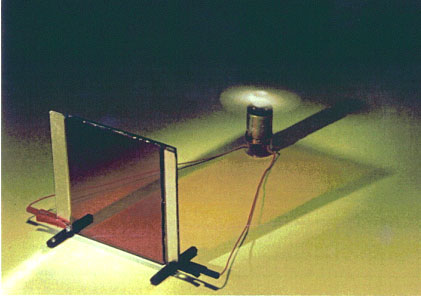SOLAR
ENERGY
Photosynthesis
converts only 0.02-0.05% of the incident solar that represents about 100 times
the food needed for mankind. Covering 0.1% or the earth's surface with 10% solar
cells efficiency would satisfy our present needs. In parallel to costly inorganic
solid-state based semiconductor solar cells emerge sensitised
nanocrystalline cells relatively cheap to fabricate. These cells need
in addition to fundamental understanding supplementary chemistry innovation
directly inspired from living organisms. Indeed architecture in plants or bacteria
and roles played by some specific molecules at the interfaces of organised systems
help us to understand the direct relation between structure and function. These
understandings direct our steps and comfort us to use the state of art chemistry
knowledge like self-assembling techniques of programmed molecules using supramolecular
chemistry concept. Our target are to design new dyes with specific groups
in order to increase temperature stability, retard back electron transfer on
the dye to improve global efficiency and also to improve contacts at interfaces
between dyes and all electrical conducting materials. Such investigations in
a near future will open the door of biochemical solar cells and the field of
self-repairing solar cells as already plants are doing.

Here
represented an electrical motor powered by a Prof. Graetzel dye sensitised solar
cell.